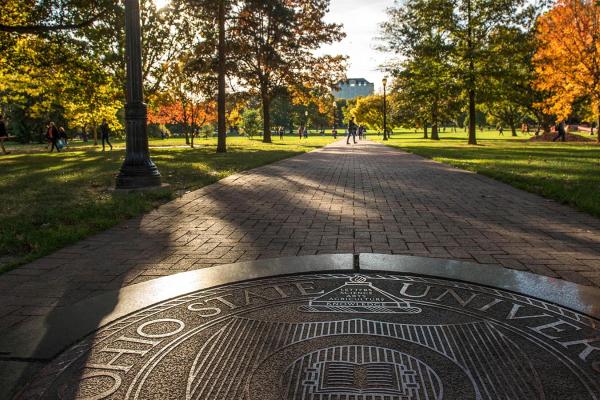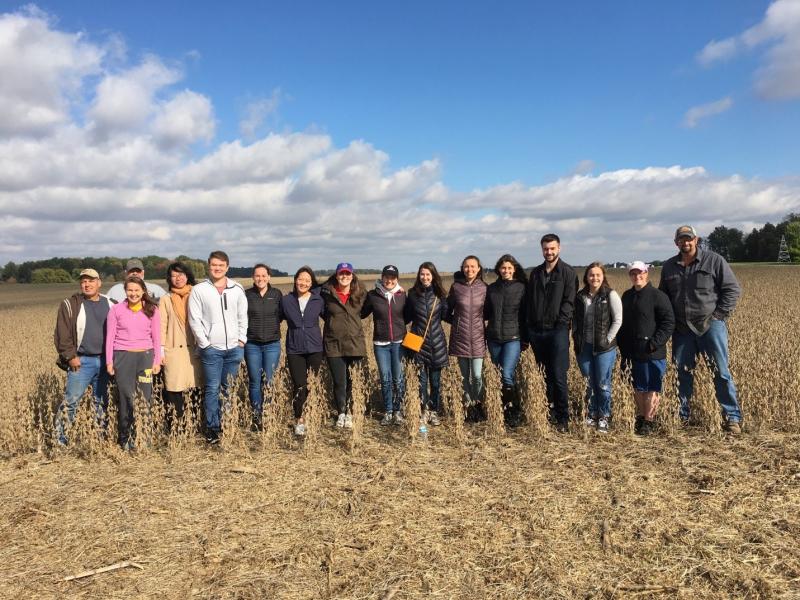Giving Thanks for Farmers


Farmers sometimes don’t get the credit they deserve when it comes to providing the quality foods we enjoy every holiday season. From the turkey and mashed potatoes to the pumpkin pie and cookies, a farmer was needed to bring those to your table.
In an effort to increase awareness about where our food comes from before it lands on the grocery store shelves, the Ohio Soybean Council (OSC) developed an educational program called Future Eats. Last month, this program organized a visit to Davis Farms in Delaware County, where I and several other Ohio State students were able to talk with the owner, Bret Davis, to learn about his operation. While I’ve had some exposure to farming since I live in a rural area outside of Columbus, many of the other students had never been to a farm before. As Jennifer Coleman, the Communications Director for OSC, commented, many of us non-farmers have more of a nostalgic view of agriculture that somehow ignores the role of modern technology in crop production. The more we talked with Mr. Davis, however, we learned that agriculture can be very hi-tech.
Mr. Davis currently serves on the OSC Board of Trustees and farms 3500 acres of corn, soybean, and wheat, in addition to running his own seed company. While that seems like an enormous amount of land to manage, Davis says it’s really a modest size for Ohio. Thanks to technology, we learned that managing an operation of that magnitude can be surprisingly efficient.
“What’s this?” he asked, holding up a device once we filed into his mini-conference room office. “An iPad,” we chorused. “Oh, is that what it’s called?” he joked. He then proceeded to explain how he could connect to the cloud using that device to look at an amazing amount of data collected for each of his fields. To show what he meant, he chose a 43-acre field and projected it on the wall TV screen. Not only could he determine the yield per acre, but he could review what varieties were planted and how well the soybeans were growing over the season thanks to satellite images taken every two weeks. To further illustrate the precision of this technology, he said he could tell us what direction he was driving when he planted a particular field 10 years ago.
The technology aspects of his farm were fascinating of course, but so were the facts and figures he readily rattled off. For instance, how much does a combine cost? At least $300,000 for the machine and another $90,000 or so for the header that attaches to the front. “I have to think of everything with zeros,” he said, mentioning that just to fill up his equipment during harvest season can cost $1500 a day.
How can he get ahead of all these expenses to make a profit? Well, it comes back around to the technology and management practices. Nowadays, rather than applying the same rate or type of fertilizer to a whole field, the farmer can efficiently add only what is needed on a half-acre basis. This saves money, reduces runoff, and increases efficiency. Other methods include planting cover crops to keep the soil active all winter, where the growing roots help keep the soil aerated and draw nutrients deep in the ground closer to the surface.
I’ve only touched the surface of what I learned from Mr. Davis, who not only knows farming and keeps up with the latest technology, but also has a keen business mind to maximize his operation. I would highly encourage others interested in learning more about farming to contact the Future Eats program (http://futureeats.com/) for upcoming farm tours. https://twitter.com/FutureEats/status/1054493957248483330
Written by TPS Fellow Irene Gentzel
